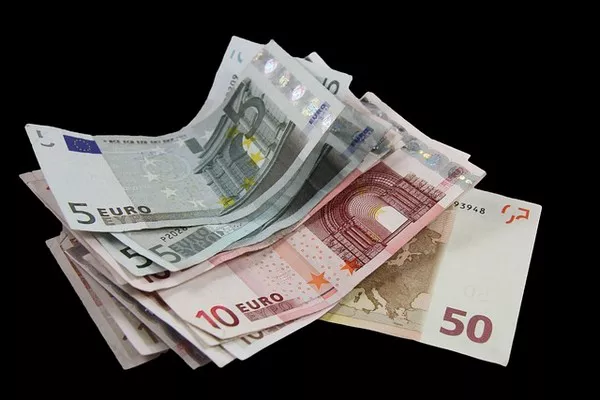In the vast landscape of European economies, one nation stands out for its resilience, innovation, and consistent growth: Germany. Renowned for its engineering prowess, manufacturing excellence, and robust fiscal policies, Germany has cemented its position as the powerhouse of Europe. Behind this economic supremacy lie multifaceted factors that have propelled Germany to the zenith of prosperity. In this article, we delve into two pivotal reasons underpinning Germany’s status as the strongest economy in Europe.
Mastery of the Manufacturing Sector:
Germany’s manufacturing sector serves as the bedrock of its economic prowess, contributing significantly to its GDP and trade surplus. The nation’s manufacturing juggernaut is fueled by several interrelated factors:
a. Engineering Excellence and Innovation:
Germany’s reputation as a global engineering hub is unparalleled. The country boasts a rich tradition of engineering prowess, fostered by a robust education system, a culture of innovation, and collaboration between industry and academia. German engineers are renowned for their precision, attention to detail, and relentless pursuit of quality. This commitment to excellence has enabled German manufacturers to produce high-quality goods that command a premium in global markets.
b. Mittelstand:
The Backbone of German Industry: At the heart of Germany’s manufacturing success story lies its Mittelstand – a vast network of small and medium-sized enterprises (SMEs) that form the backbone of the German economy. These family-owned businesses specialize in niche markets, often focusing on high-value-added products and technologies. Despite their relatively small size, Mittelstand firms punch above their weight in terms of innovation, export orientation, and job creation. By prioritizing long-term sustainability over short-term gains, Mittelstand companies have fostered a culture of stability and resilience within the German industrial landscape.
c. Export-Oriented Growth Strategy:
Germany’s export-oriented growth model has been a driving force behind its economic success. Leveraging its reputation for quality and reliability, German manufacturers have cultivated strong trade relationships across the globe. The country’s export prowess extends beyond traditional markets in Europe to emerging economies in Asia, Africa, and Latin America. Key export sectors include automotive, machinery, chemicals, and electronics. The resilience of Germany’s export sector was on full display during the global financial crisis of 2008, as German manufacturers weathered the storm better than their counterparts in many other advanced economies.
d. Integration into Global Value Chains:
Germany’s manufacturing success is closely intertwined with its integration into global value chains. German companies play pivotal roles in international production networks, collaborating with suppliers and partners worldwide to optimize efficiency and mitigate risks. This interconnectedness has enabled German manufacturers to leverage comparative advantages in technology, expertise, and market access, driving productivity gains and fostering continuous innovation.
Fiscal Discipline and Economic Governance:
Germany’s economic stability and resilience are further bolstered by its commitment to fiscal discipline, prudent macroeconomic policies, and effective governance structures. Key factors contributing to Germany’s fiscal prowess include:
a. Sound Fiscal Management:
Germany has long been heralded for its commitment to balanced budgets and fiscal prudence. The country’s adherence to the principles of sound fiscal management, enshrined in its constitution and institutionalized through mechanisms such as the debt brake, has earned it credibility and trust among investors and international financial institutions. By prioritizing fiscal sustainability and long-term planning, Germany has been able to weather economic downturns and maintain investor confidence even in turbulent times.
b. Labor Market Flexibility and Social Partnership:
Germany’s labor market policies emphasize flexibility, competitiveness, and social cohesion. The dual vocational education system, which combines classroom training with on-the-job apprenticeships, ensures a skilled workforce that meets the needs of the labor market. Moreover, Germany’s social partnership model fosters cooperation between employers, trade unions, and government authorities, enabling collective bargaining agreements that balance the interests of workers and employers while promoting productivity and economic stability.
c. European Integration and Leadership:
As the largest economy in the European Union (EU), Germany plays a central role in shaping EU policies and fostering economic integration across the continent. The country’s leadership in promoting fiscal discipline, structural reforms, and economic convergence within the Eurozone has been instrumental in safeguarding the stability of the single currency and strengthening the resilience of member states. Germany’s commitment to European integration is underscored by its role as the engine of the European economy, driving growth, innovation, and cooperation across borders.
Conclusion:
In conclusion, Germany’s economic supremacy in Europe is underpinned by a combination of factors, including mastery of the manufacturing sector, fiscal discipline, and effective economic governance. By leveraging its engineering excellence, export-oriented growth strategy, and Mittelstand ecosystem, Germany has established itself as a global manufacturing powerhouse. Moreover, the country’s commitment to sound fiscal management, labor market flexibility, and European integration has fortified its economic resilience and stability. As Germany continues to navigate the challenges of the 21st century economy, its multifaceted strengths are likely to ensure its position as the strongest economy in Europe for years to come.


